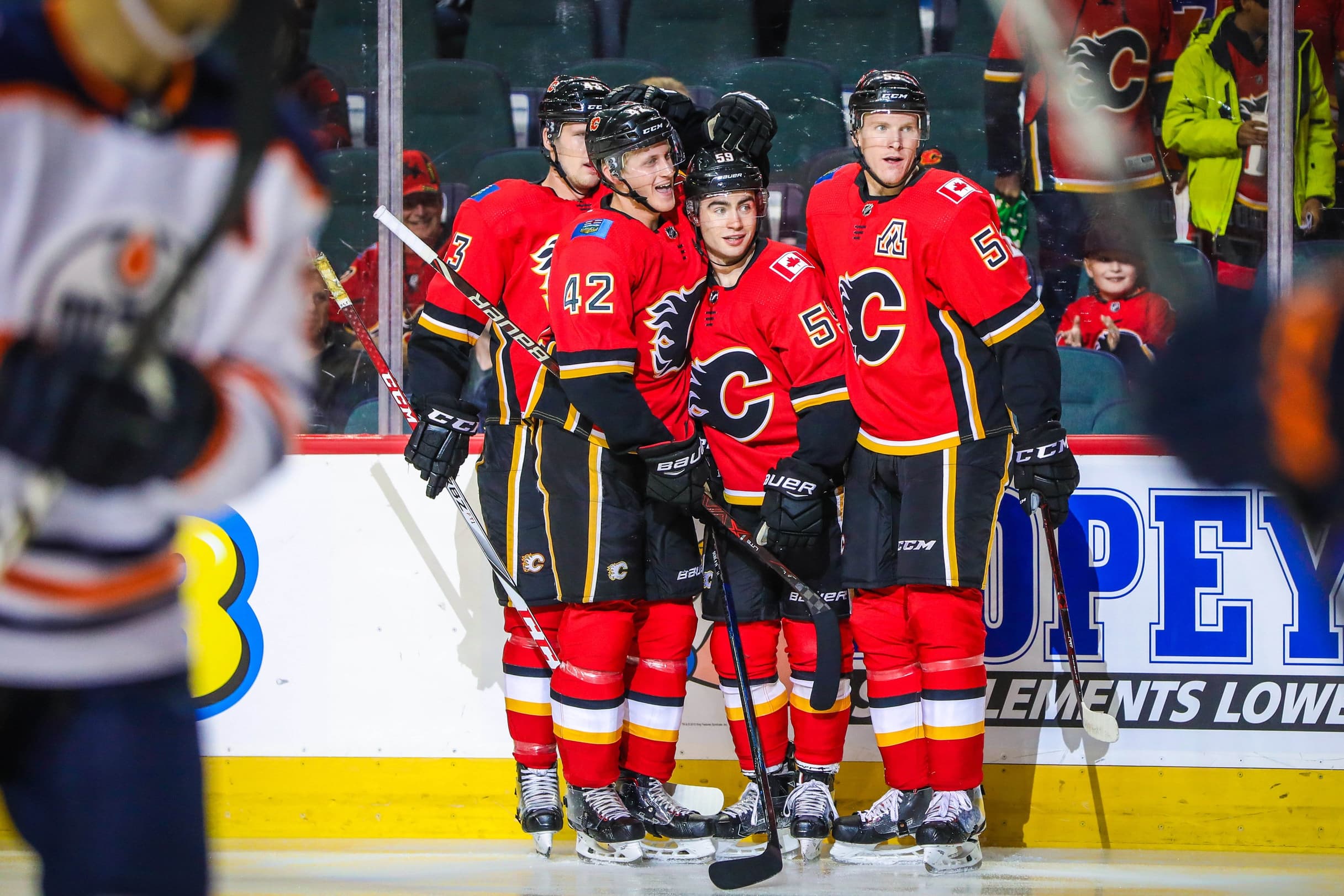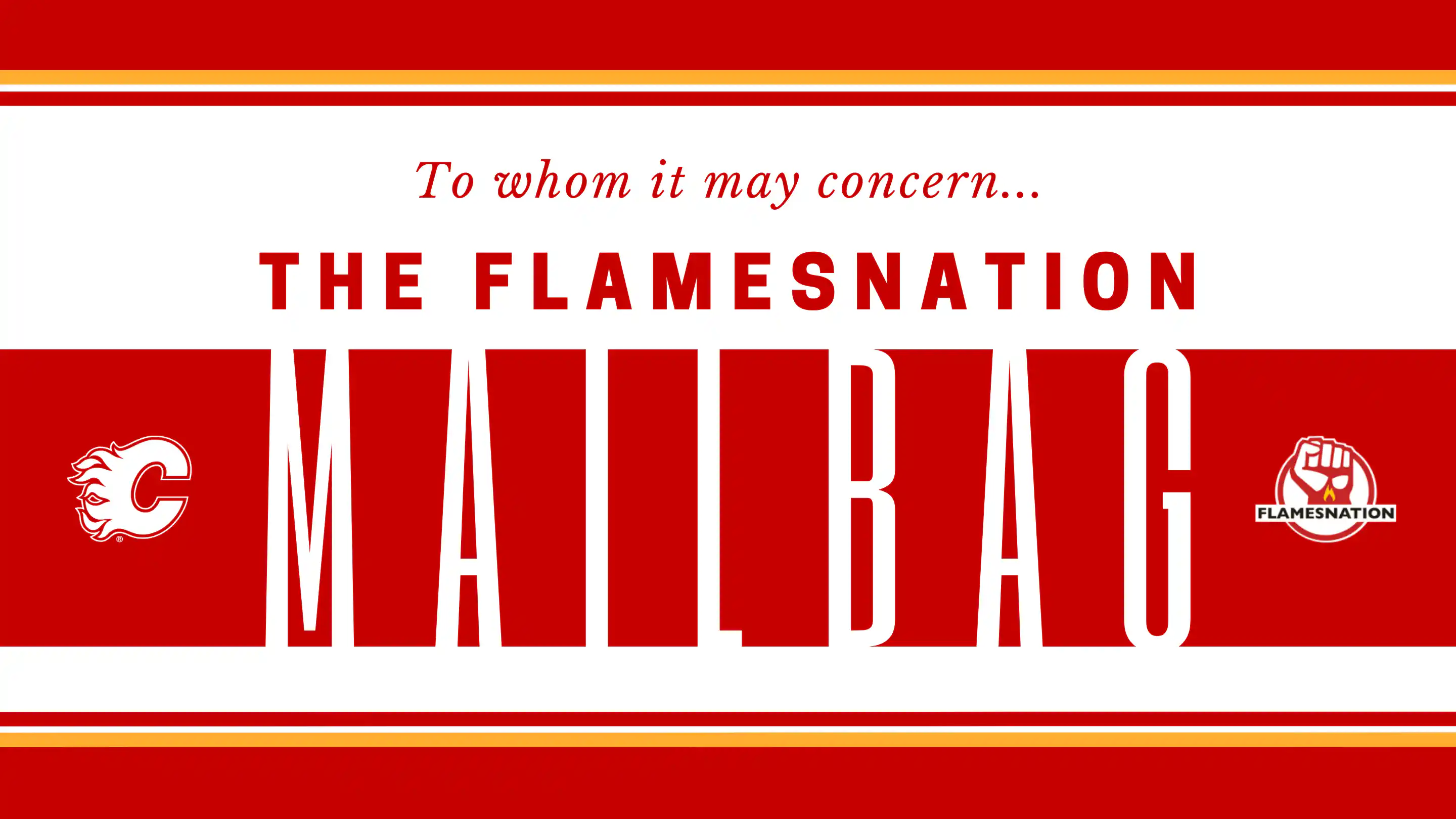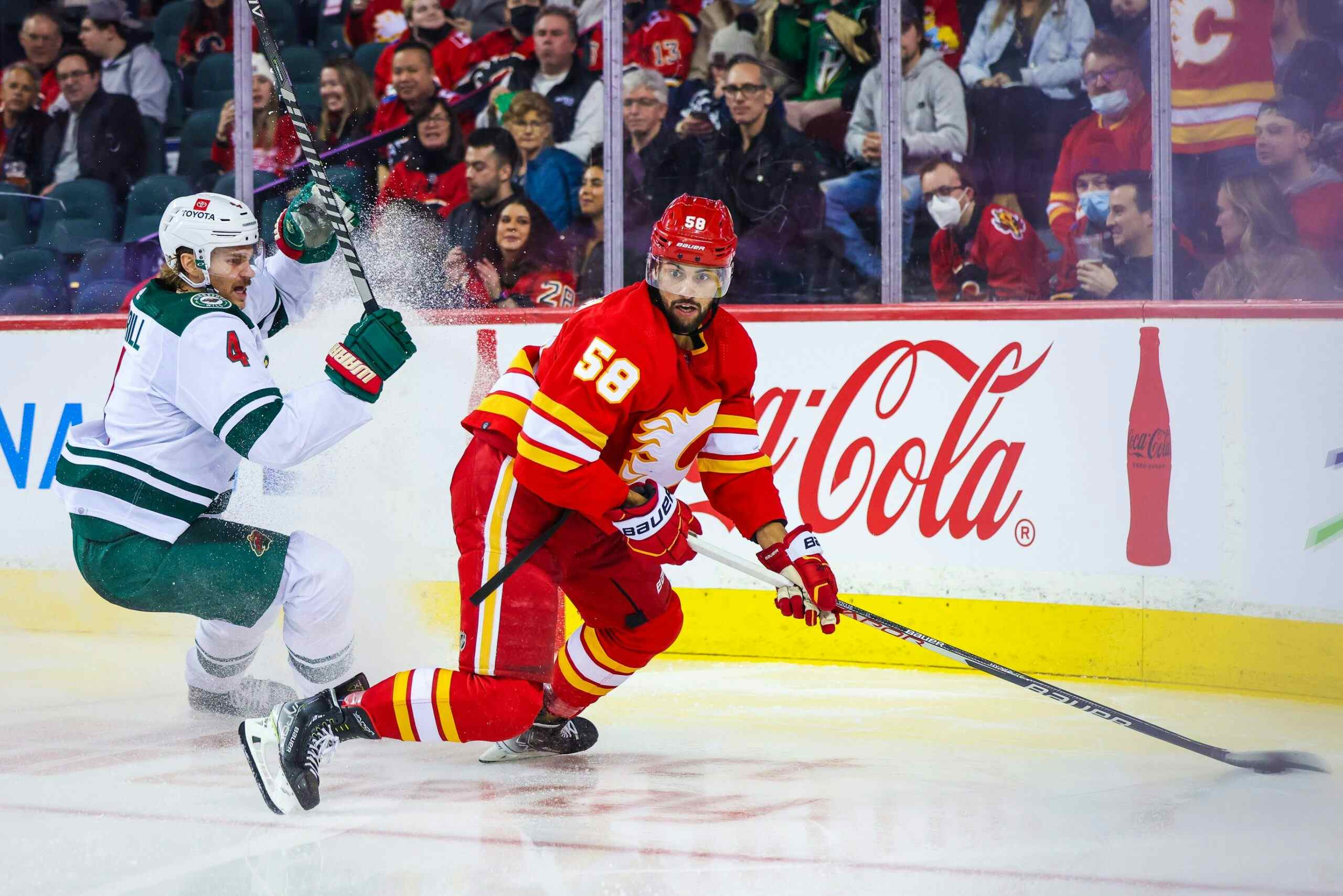How can this year’s Flames fit under the salary cap?

By Mike Gould
3 years agoIt’s been a common refrain of supporters and critics alike this off-season: “Are the Calgary Flames over the cap?”
The answer is more complicated than you might think, and it depends on how they plan on approaching this season.
If the Flames really want to have a 23-man roster that looks something like this…
| #13 Johnny Gaudreau | #23 Sean Monahan | #28 Elias Lindholm |
| #19 Matthew Tkachuk | #11 Mikael Backlund | #88 Andrew Mangiapane |
| #17 Milan Lucic | #93 Sam Bennett | #29 Dillon Dube |
| #81 Dominik Simon | #10 Derek Ryan | #27 Josh Leivo |
| #20 Joakim Nordstrom | #53 Buddy Robinson |
| #5 Mark Giordano | #8 Christopher Tanev |
| #55 Noah Hanifin | #4 Rasmus Andersson |
| #6 Juuso Valimaki | #89 Nikita Nesterov |
| #58 Oliver Kylington |
| #25 Jacob Markstrom | #33 David Rittich |
…then, yes, they are over the cap from anywhere between approximately $390,000 to $850,000 (depending on performance bonuses for Dube and Valimaki and what kind of contract Kylington ends up signing). Or, to be clear, they’re on pace to be over by an amount in that range by the end of the season, considering how NHL contracts are calculated and accounted for on a daily basis. More on that later.
First, though, let’s get some clarity on how the salary cap is impacted by roster size. NHL teams are not required to have 23 players on the roster at all times — far from it, actually. Teams can carry 22, 21, or even 20 players on their roster, which is something that’s important to know given that only the players on a team’s roster at any given time count against the salary cap. Right now, it looks very likely that the Flames will start the season with 22 players.
As we all know, NHL rosters fluctuate very frequently. In a macro sense, teams usually make at least one trade involving a player every season which involves money either coming off or being added to a team’s books. How does this impact the salary cap? To answer this, we need to return to the fact that NHL contracts count against the salary cap on a daily basis, with the daily cap hit being calculated based on a roster snapshot at 3 p.m. MT each day during the regular season.
Remember when Calgary traded Michael Frolik to Buffalo on Jan. 2? Frolik was in the final season of a five year contract paying him an average of $4.3 million per season. (Frolik’s actual salary varied in every year of the contract and he only made $3 million in 2019–20; however, this information isn’t all that important to consider at the moment).
When the Flames dealt Frolik to Buffalo, they didn’t simply eradicate $4.3 million from their books, ready to be allocated elsewhere. Frolik had already played 38 games in Calgary, and he’d been paid (and counted against the cap) for every single day he’d spent on the roster. That daily rate added up to roughly half of Frolik’s cap hit and, even after he left the Flames, that figure still counted against the Flames’ $81.5 million salary cap.
It’s helpful to think of the salary cap as a bank. The Flames will begin the season with a full bank account containing $81.5 million to be withdrawn on a daily basis over the course of the season. It’s hard to say how long the upcoming season will be, owing to the pandemic and the plans for a potentially abbreviated season but, per article 16.3 (a) of the NHL’s Collective Bargaining Agreement, a typical regular season lasts no fewer than 184 days (players aren’t paid in salary for the playoffs). For the purposes of this article, we’ll be using that 184-day figure, keeping in mind that 2020–21 will probably be much shorter.
The Flames’ highest-paid player, Matthew Tkachuk, has a salary cap hit of $7 million. So, to figure out how much he counts against the cap each day, simply divide $7 million by 184 days to reach a figure of $38,043.48. The figure can change each year depending on the length of the season.
Tkachuk has a one-way contract and is all but guaranteed to remain a Flame for the entire season (barring injuries, which are impossible to predict). But what about the players whose fates are less certain, such as pending UFA David Rittich?
Rittich is set to count for $2.75 million against the cap this year. In a standard 184-day season, that’d be equivalent to approximately $14,945.65 per day (and yes, he’ll still get paid for the days where he’s the backup goalie). But what if Rittich is traded 60 days into the season to a team like Chicago, desperate for goaltending help?
Assuming no salary is retained and none is taken back, the Flames would be on the hook for that $14,945.65 daily figure multiplied by 60 days, or $896,739.13, while the Blackhawks would be accountable for the rest. Trading Rittich at that point in the season would thus free up not $2.75 million in space for the Flames, but instead $2.75 million subtracted by $896,739.13, or $1,853,260.87.
But let’s take things one step further. Let’s say, in this theoretical trade with Chicago on day 60 of a 184-day season, the Flames trade Rittich for a pick and retain a quarter of his salary. The Flames have still already owed Rittich $896,739.13 against the cap, but they’d now also be on the hook for a quarter of his daily allowance going forward: Calgary would now be charged 1/4 of Rittich’s $14,945.65 daily figure for the remaining 124 days of the season, while Chicago would pay the other three quarters.
In this scenario, Calgary has already paid Rittich $896,739.13, and they’ve agreed to pay a quarter of Rittich’s daily cap hit for the remainder of the season. That retained salary figure can be calculated by multiplying $14,945.65 by the 124 days left in the season and then again by 0.25, with the answer coming out to $463,315.22. In total, Calgary is on the hook for $1,360,054.35 of Rittich’s $2,750,000 cap hit and has cleared $1,389,945.65 of salary cap space by making this trade.
Complicated, eh? Imagine how NHL general managers feel. But this daily calculation method allows for front offices to get creative with managing their salary caps.
Remember, players are paid for every day they spend on an NHL roster. When a player is demoted to the American Hockey League, they do not count against the NHL salary cap for the days that they’re down there unless their NHL cap hit exceeds $1,075,000, in which case something very complicated happens.
Let’s take a run up the QE2 and look at Jujhar Khaira’s contract. Khaira is a player right on the bubble of the Oilers’ lineup and there’s a very realistic chance that he could get demoted to the AHL if guys like Tyler Benson or Cooper Marody take strides with the Bakersfield Condors. Khaira’s NHL cap hit this year is $1.2 million. If he’s sent down to the farm, how will that impact the Oilers’ cap situation?
$1.2 million is $125,000 more than $1.075 million, the buried cap hit threshold for 2020–21. So, for every day that Khaira would spend in the minors, his NHL cap hit would actually be $125,000 divided by the number of days in the NHL season. We’ve been working with the assumption of a 184-day NHL season, so let’s go with that. In that case, Khaira would count for just $679.35 against the NHL salary cap for every day he spends in the minors.
Let’s say Khaira spends 120 days in the NHL in our theoretical 184-day season and the other 64 days in the American league. Here’s how he’d count against the salary cap:
- 120 days in the NHL times ($1.2 million NHL cap hit / 184 days in a season) = $782,608.70 NHL cap hit
- 64 days in the AHL times ($125,000 / 184 days in a season) = $43,478.26 AHL cap hit
- $782,608.70 + $43,478.26 = $826,086.96 total actual cap hit
- $1.2 million expected cap hit – $826,086.96 total actual cap hit = $373,913.04 in savings
The Oilers have freed up nearly $375,000 in our scenario simply by demoting one player for part of the season. Could the Flames save money in this way?
I can already hear you typing your comments about how the Oilers would need to replace Khaira with a player who would count against the salary cap. That is probably true. But what if Khaira was already one of the Oilers’ extra forwards, not playing every night? If they needed to bank a little bit of extra breathing room before the trade deadline, they could waive a guy like Khaira and, if he clears, free up an extra $5,842.39 of cap space for every day he spends in the minors.
“Paper transactions” are already a very common practice in the NHL, used particularly with players exempt from waivers to bury them in the minors on non-game days to save a little bit of extra cap space. In the presumptive roster posted above, the Flames have two such players: Juuso Valimaki, and Dillon Dube. Both of these players have NHL cap hits under $1.075 million, meaning they can be entirely buried in the AHL.
Here’s how much daily cap space the Flames can save in a standard 184-day season by demoting each of these players, assuming they stay healthy for an 82-game season, for all the other 102 off days.
—
Dillon Dube
- $778,333 expected NHL cap hit / 184 days in a season = $4,230.07 daily cap hit
- $4,230.07 daily cap hit times 82 game days in the NHL = $346,865.79 actual NHL cap hit
- $778,333 expected NHL cap hit – $346,865.79 actual NHL cap hit = $431,467.21 in savings
Juuso Valimaki
- $894,166 NHL cap hit / 184 days in a season = $4,859.60 daily cap hit
- $4,859.60 daily cap hit times 82 game days in the NHL = $398,487.02 total actual cap hit
- $894,166 NHL cap hit – $398,487.02 total actual cap hit = $495,678.98 in savings
—
Again, this is hard to contextualize for what will undoubtedly be a compressed 2020–21 season. It’s impossible to know right now for how many days the season will last and how many games will be played. But, in any case, the Flames would be able to save a significant amount of money by demoting their waiver-exempt players on non-game days.
This policy could also extend to players who do require waivers. Buddy Robinson is the “23rd man” in the roster proposed above. He will have an NHL cap hit of $700,000 for the 2020–21 season but he will also require waivers. That said, if the Flames choose to waive him at any given point in the season and he clears, they’ll be able to recall him and send him down at will until he spends 30 more days, in total, on the NHL roster. That would enable the Flames to use paper transactions on Robinson without having to deal with constantly throwing him on waivers.
One last factor that might give the Flames more cap flexibility for this upcoming season is the placement of their AHL affiliate. In recent years, the Flames have been forced to carry extra bodies with them at all times due to the remoteness of their Stockton, California-based farm team. If a guy goes down blocking a shot at a morning practice the day of a game, there needs to be a guy on-hand to step in immediately. Flights from California to Calgary are hard to coordinate.
But, with the COVID pandemic, it’s looking like the Heat could be temporarily relocating north of the border. If that’s the case, and the Heat are located in close proximity to the Flames, those extra bodies would be around by default and the Flames might be able to get away with having 21 or even 20 players on the roster when they and the Heat are both playing at home. Remember, teams only pay for the guys on their NHL roster at any given time, so a 20-man active roster versus a typical 23-man squad would cost three players’ daily worth less for each day it’s deployed.
In the long run, these savings are valuable, particularly at times like the NHL’s trade deadline where roughly three quarters of a player’s yearly cap hit has already been paid. Say the Flames want to add a big-name player at the deadline from Florida who has a yearly cap hit of $4 million. With approximately 75% of his cap hit already accounted for by the Panthers, the Flames would only need around $1 million of cap space banked to add this player — and that figure could decrease to just $500,000 if the Cats agreed to retain 50% on the transaction.
How do you think the Flames should approach their finances this season? Do you think they should ship out anybody already on the roster to start banking space now? Should they try carrying 21 or even 20 players for parts of the season to save money for later? Will they use paper transactions on guys like Valimaki and Dube? Sound off in the comments below with your thoughts.
Recent articles from Mike Gould





